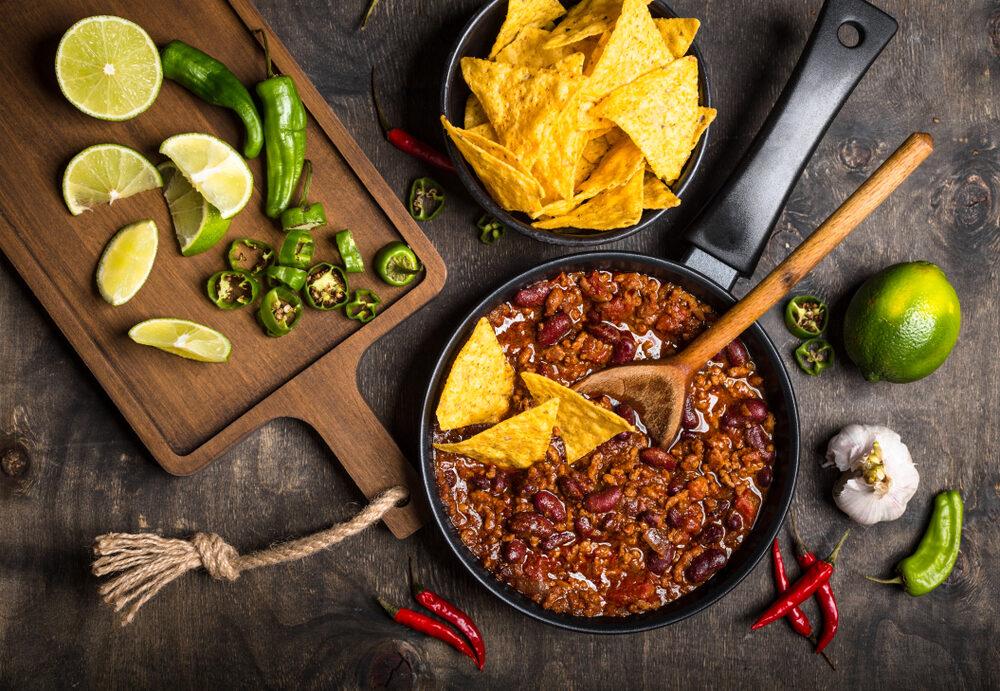I think of it as post-season football food. Every year, I make a giant batch of chili just before the Super Bowl. I am in the heart of northern winter and nothing could be heartier and more warming than a big ol’ bowl of a very American comfort food.
But while I suggest chili as some sort of national dish that brings us all together, when it comes to the proper recipe, it does quite the opposite. Beans or no beans? That’s usually where it starts, but then disagreements continue all the way down the list, even to what sort of beer you pour into it at the end. What? You don’t put beer in yours? Moving on…





